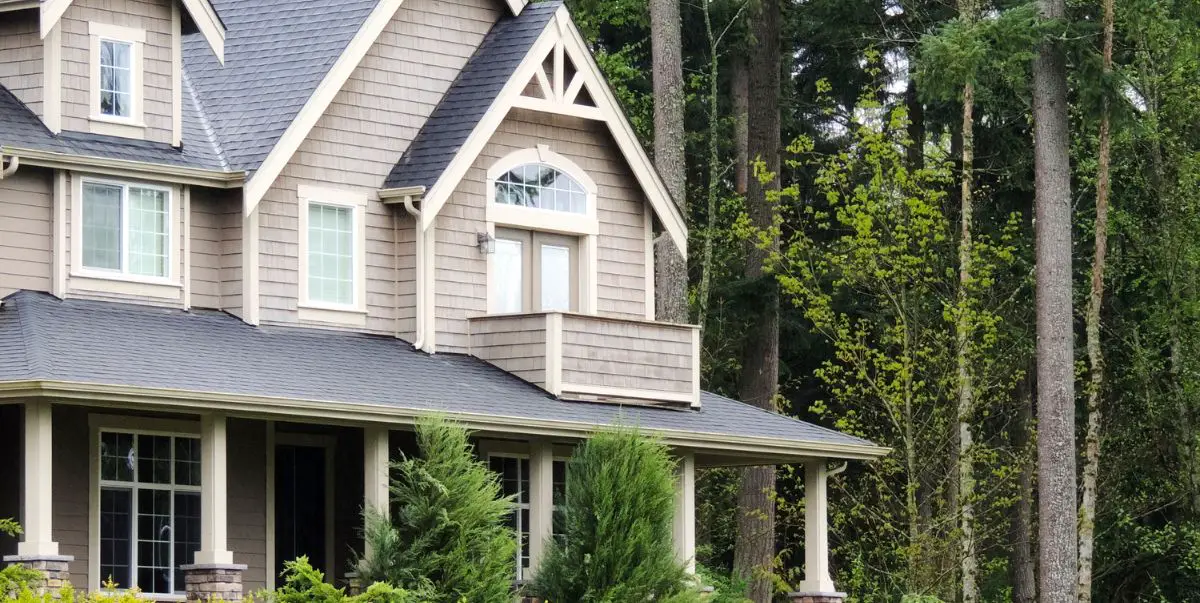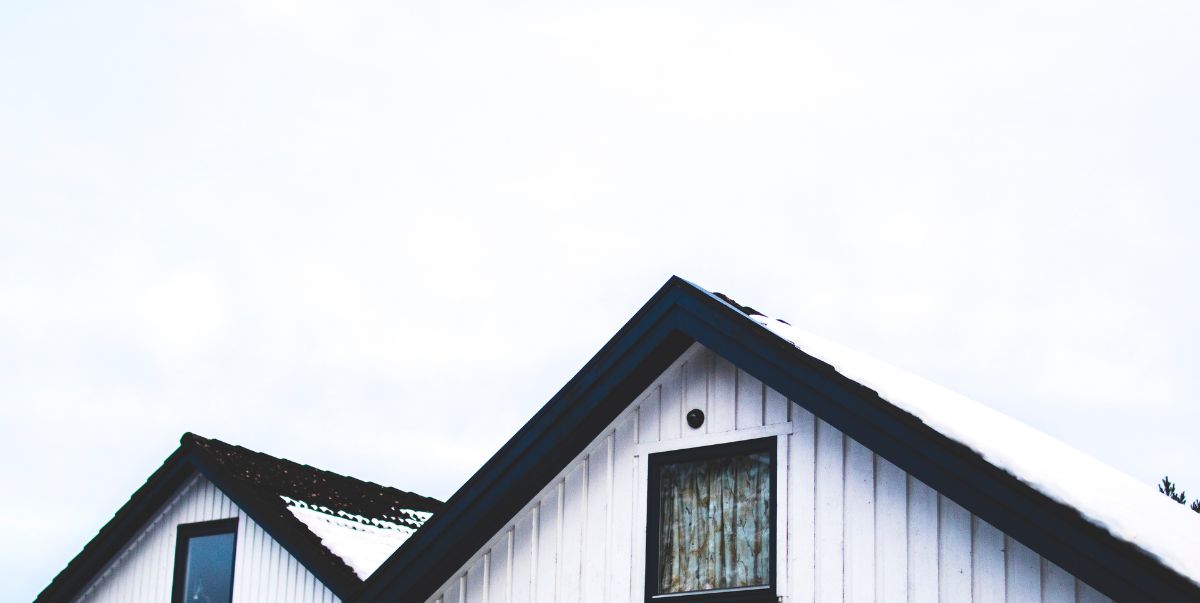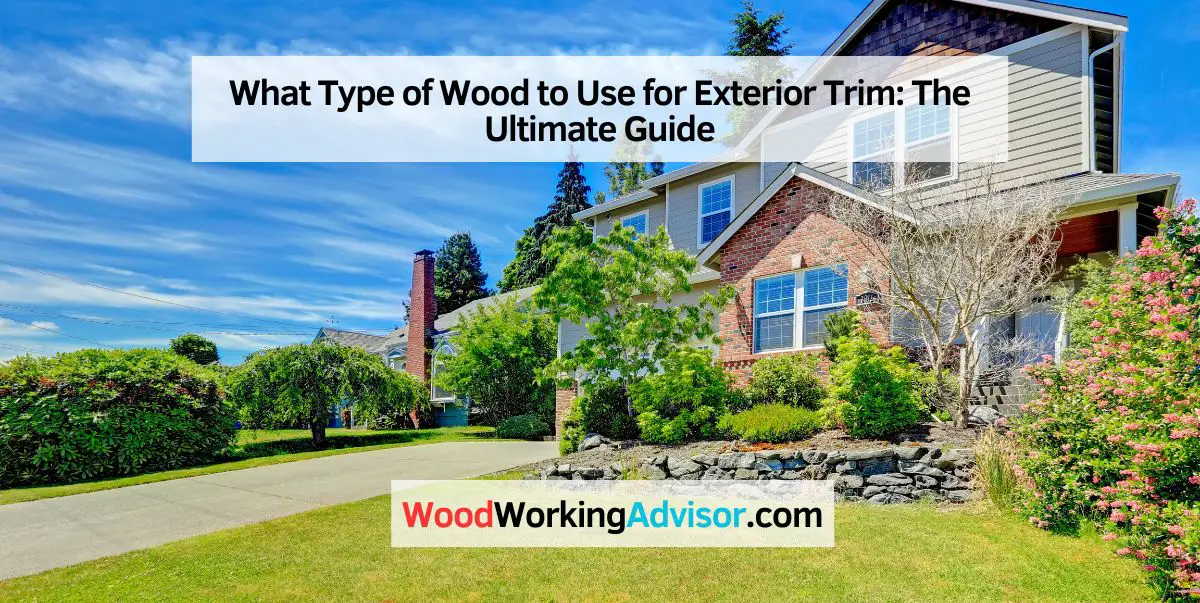Use rot-resistant woods like cedar, redwood, or composite materials for exterior trim. Proper choice of wood is crucial for long-lasting and durable exterior trim.
It should be resistant to rot and moisture, as well as have a natural resistance against insect infestation. Exterior trim serves as both a decorative element and a protective barrier, so selecting the right type of wood ensures the overall aesthetics and durability of the trim.
Now, let’s explore the various factors to consider when choosing the best type of wood for your exterior trim.
Different Types Of Wood For Exterior Trim
When it comes to choosing the right type of wood for your exterior trim, there are a few options that stand out. Each type of wood has its own unique characteristics and benefits, so it’s important to understand what sets them apart.
Cedar
Cedar is a popular choice for exterior trim due to its natural resistance to rot, decay, and insect damage. This makes it a durable option that can withstand the elements, making it ideal for outdoor applications. Additionally, cedar has a beautiful reddish-brown color with a distinctive grain pattern, adding an attractive aesthetic touch to any home.
Here are a few reasons why cedar is a great choice for exterior trim:
- Cedar is naturally resistant to rot, decay, and insect damage.
- It has a beautiful reddish-brown color and distinct grain pattern.
- Cedar is relatively lightweight, making installation easier.
- It requires minimal maintenance to keep its natural beauty intact.
Redwood
Similar to cedar, redwood is another excellent choice for exterior trim. It is known for its natural durability and resistance to decay and insect damage. Redwood has a rich, deep color that darkens over time, creating a timeless and elegant look for your home.
Here are a few reasons why redwood is a great choice for exterior trim:
- Redwood has natural resistance to decay, rot, and insects.
- It has a beautiful, rich color that deepens over time.
- Redwood is a stable wood that doesn’t shrink or warp easily.
- It is easy to work with and can be easily painted or stained.
Pvc Trim Boards
For those looking for a low-maintenance option, PVC trim boards are a popular alternative to natural wood. Made from a combination of PVC resin and other materials, these trim boards offer excellent weather resistance and durability. PVC trim boards are available in various sizes and can be easily cut, shaped, and installed.
Here are a few reasons why PVC trim boards are a great choice for exterior trim:
- PVC trim boards are highly resistant to moisture, rot, and insects.
- They require minimal maintenance and do not need to be painted or stained.
- PVC trim boards are durable and can withstand harsh weather conditions.
- They can be easily cut, shaped, and installed.
Choosing the right type of wood for your exterior trim depends on your preferences, budget, and the specific needs of your project. Whether you opt for the natural beauty of cedar or redwood or the low-maintenance convenience of PVC trim boards, each option offers its own advantages to enhance the exterior of your home.

Factors To Consider When Choosing Wood For Exterior Trim
Consider the climate, durability, and maintenance requirements when choosing wood for exterior trim. Opt for rot-resistant woods such as cedar, redwood, or cypress to ensure longevity. Additionally, look for wood with tight grain and natural resistance to decay, insects, and moisture for optimal performance in exterior applications.
Durability
Durability is one of the key factors to consider when choosing wood for exterior trim. The wood you select should be able to withstand exposure to the elements and resist decay and damage over time. Certain types of wood, such as cedar and redwood, are known for their natural resistance to rot and insect infestation, making them excellent choices for exterior trim. These woods contain natural oils and chemicals that act as preservatives, enhancing their durability.
Maintenance
The level of maintenance required for the wood used in exterior trim is an important consideration. Some wood species, like vinyl and composite materials, require minimal maintenance. They are resistant to rot, warping, and insect damage, and simply need occasional cleaning with soap and water. On the other hand, woods like pine or fir may require regular maintenance, including staining or painting every few years to protect against moisture and sun damage. It’s important to choose wood that matches your desired level of maintenance commitment.
Cost
Cost is another crucial factor when deciding which wood to use for exterior trim. Different types of wood have different price points, and the cost can vary depending on the availability and location. While hardwoods like teak and mahogany may be more expensive, softwoods like pine and fir are usually more affordable. Additionally, exotic woods can come at a premium price due to their unique aesthetics and properties. It’s essential to weigh the costs against the desired durability and maintenance requirements to find the best wood that fits within your budget.
Preparing And Installing Exterior Trim
When it comes to preparing and installing exterior trim, choosing the right type of wood is crucial for ensuring durability and a polished appearance. Taking into consideration the exposure to outdoor elements, the wood should be able to withstand moisture, temperature fluctuations, and insects. Additionally, proper installation techniques and wood treatment are essential for maintaining the integrity of the exterior trim. Let’s delve into the key aspects of wood treatment and protection, as well as proper installation techniques for exterior trim.
Wood Treatment And Protection
Before installing the exterior trim, it’s important to treat the wood properly to enhance its longevity and protect it from potential damage. Applying a high-quality primer and paint or wood preservative can help shield the wood from moisture, UV rays, and fungal decay. Additionally, using a sealant on the cut ends of the wood pieces can prevent water infiltration and potential rot. Regular maintenance, such as repainting and resealing, should be part of the ongoing wood protection strategy to ensure the trim maintains its structural integrity over time.
Proper Installation Techniques
- Choose a suitable wood species, such as cedar or redwood, known for their natural resistance to decay and insect infestation. These species are ideal for exterior trim due to their durability and low maintenance requirements.
- Ensure proper ventilation and drainage behind the trim to prevent moisture buildup, which can lead to rot and mold growth.
- Use corrosion-resistant fasteners, such as stainless steel or galvanized nails, to secure the trim in place. This helps prevent rust stains and corrosion, maintaining the visual appeal of the trim.
- Allow for natural expansion and contraction of the wood by leaving adequate spacing between the trim pieces and adjacent materials. This prevents warping and cracking due to changes in humidity and temperature.
- Seal all joints and edges of the trim with a durable caulk to create a barrier against water penetration. This step is crucial for preventing moisture-related deterioration.
Maintaining Exterior Wood Trim
Regular maintenance is essential to preserve the beauty and longevity of your exterior wood trim. By taking simple steps, you can maintain and protect the wood, adding value and visual appeal to your property. Let’s delve into some key practices for maintaining exterior wood trim.
Regular Inspection
To keep your exterior wood trim in optimal condition, regular inspections are crucial. Inspect the trim for any signs of damage, such as cracks, rot, or insect infestation. Detecting issues early on will allow you to address them promptly, preventing further damage or deterioration.
During inspections, pay close attention to areas that are more susceptible to damage, such as those exposed to direct sunlight or harsh weather conditions. These vulnerable areas may require additional attention and maintenance.
Refinishing And Repainting
Refinishing or repainting your exterior wood trim is an effective way to maintain its beauty and protect it from the elements. Over time, the finish or paint on the wood may wear off or become faded, leaving the trim vulnerable to moisture and UV rays.
When refinishing the wood, start with a thorough cleaning to remove any dirt, grime, or old coatings. Once the surface is clean and dry, apply a high-quality wood stain or paint that is specifically designed for exterior use. This will provide a protective layer that enhances the trim’s appearance and shields it from moisture and sun damage.
It is important to note that refinishing or repainting the exterior wood trim should be done at regular intervals, following the manufacturer’s recommendations. This ensures that the wood remains well-protected and maintains its natural beauty over time.
Maintaining Exterior Wood Trim In Summary
- Regularly inspect the exterior wood trim for damage or signs of deterioration.
- Pay extra attention to vulnerable areas exposed to sunlight and harsh weather.
- Clean the trim thoroughly before refinishing or repainting.
- Use high-quality wood stain or paint specifically designed for outdoor use.
- Follow the manufacturer’s recommendations for refinishing intervals.
By following these steps, you can ensure the longevity and appeal of your exterior wood trim. Regular maintenance and proper care will protect the wood from the elements, keeping it in excellent condition for years to come.
Alternatives To Wood Trim For Exterior Use
For exterior trim, consider alternatives to wood such as PVC, fiber cement, aluminum, and composite materials. These options offer durability, resistance to rot and insects, and a wide range of styles to enhance the exterior of your home.
When it comes to choosing the right type of wood for exterior trim, it’s important to consider alternatives as well. While wood trim is a popular choice for its natural beauty and timeless appeal, there are other materials available that offer similar benefits with added advantages in terms of durability, versatility, and maintenance. Two popular alternatives to wood trim for exterior use are engineered wood and fiber cement.
Engineered Wood
Engineered wood, also known as composite wood or man-made wood, is a versatile and eco-friendly option for exterior trim. It is made by combining pieces of real wood with adhesives and resins, creating a strong and durable material that can withstand the elements. Engineered wood is available in a variety of styles and finishes, allowing homeowners to achieve the look of real wood trim without the maintenance requirements.
One notable benefit of engineered wood is its resistance to warping, rotting, and insect infestation, making it an ideal choice for areas with high humidity or extreme weather conditions. Additionally, engineered wood is often less expensive than natural wood, making it a cost-effective option for homeowners on a budget.
Another advantage of using engineered wood for exterior trim is its sustainability. It is made from recycled and reclaimed wood fibers, reducing the demand for new lumber and promoting environmental responsibility. This makes it an attractive choice for those who want to incorporate eco-friendly materials into their home design.
Fiber Cement
Fiber cement is another alternative to wood trim that is gaining popularity among homeowners and builders. It is a composite material made from a mixture of cement, cellulose fibers, and other additives. Fiber cement offers the look of wood trim while providing exceptional durability and low maintenance requirements.
One of the key benefits of fiber cement is its resistance to fire, insects, rot, and warping. It is designed to withstand harsh weather conditions, making it a reliable choice for exterior trim. Additionally, fiber cement is moisture-resistant, reducing the risk of mold and mildew growth.
Another advantage of using fiber cement for exterior trim is its versatility. It can be painted in a wide range of colors and finishes, allowing homeowners to customize the look of their home while ensuring long-lasting beauty and protection. Fiber cement also offers excellent dimensional stability, meaning it won’t expand or contract with changes in temperature and humidity.
In conclusion, when it comes to exterior trim, wood is not the only option. Engineered wood and fiber cement are two viable alternatives that offer durability, versatility, and low maintenance. Whether you’re looking for a budget-friendly option or an eco-friendly alternative, these materials provide a range of benefits that make them worth considering for your next exterior trim project.

Frequently Asked Questions For What Type Of Wood To Use For Exterior Trim
What Is The Best Material For Exterior Trim Board?
The best material for exterior trim board is PVC (polyvinyl chloride) due to its durability, low maintenance requirements, and resistance to moisture, insects, and rot. PVC trim boards are also easy to work with and have a long lifespan, making them a popular choice for exterior trim applications.
Can I Use Pressure Treated Wood For Exterior Trim?
Yes, pressure treated wood can be used for exterior trim. It is resistant to decay and insect damage, making it suitable for outdoor applications. Proper installation and finishing are important for longevity.
Is It Ok To Use Pine For Exterior Trim?
Yes, using pine for exterior trim is generally acceptable. Pine is a popular choice for exterior trim due to its natural beauty and affordability. However, it is important to apply a protective finish and perform regular maintenance to ensure its longevity and resistance to weathering.
What Is The Cheapest Wood For Exterior Trim?
The cheapest wood for exterior trim would be pine. It is a cost-effective option that provides the desired aesthetics while being durable and weather-resistant. Pine is widely available and can be easily found at affordable prices.
Conclusion
In choosing wood for exterior trim, it’s critical to consider durability and resistance to decay. Your decision should also factor in the climate and style of your home. Proper maintenance and finishing will prolong the life of your exterior wood trim.
Remember to consult with professionals for the best results.



One thought on “What Type of Wood to Use for Exterior Trim: The Ultimate Guide”